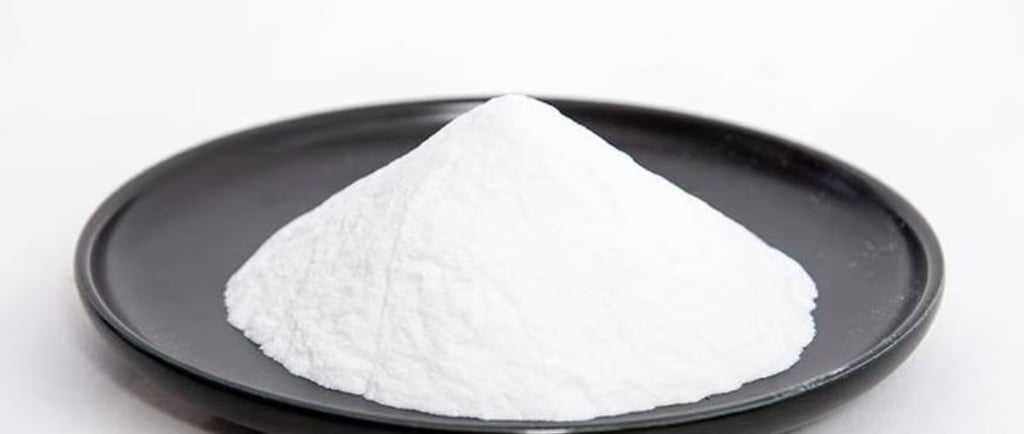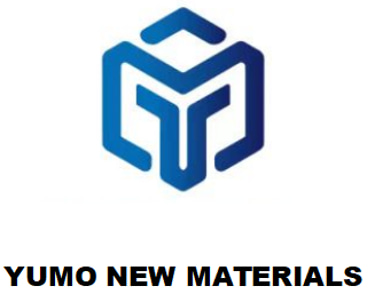HENAN YUMO: Engineered Precision, Uncompromised Performance
Alumina Powder Formula: Composition, Properties, and Industrial Applications
Aluminum oxide powder, commonly referred to as alumina (Al₂O₃), is one of the most widely used ceramic materials in the world. Known for its hardness, chemical stability, and high thermal resistance, this fine white or off-white powder plays an essential role across numerous industries, from electronics and aerospace to medical implants and abrasives.
8/7/20253 min read


1. What is the Chemical Formula of Alumina Powder?
1.1 The Basic Formula: Al₂O₃
The chemical formula of alumina powder is:
Al₂O₃
This represents aluminum oxide, a compound composed of two aluminum atoms (Al) and three oxygen atoms (O). It is a chemically stable, crystalline white powder, typically derived from bauxite or refined through synthetic processes.
1.2 Explanation of the Formula
Aluminum (Al) is a lightweight, reactive metal.
Oxygen (O) is a non-metal that readily forms oxides with metals.
In Al₂O₃, each aluminum atom forms strong ionic bonds with oxygen, creating a thermodynamically stable compound.
This formula is the foundation of the powder’s physical strength, thermal resistance, and chemical inertness.
2. Crystal Structure of Alumina Powder
Aluminum oxide can exist in multiple crystalline phases, but the most common and stable one is alpha-alumina (α-Al₂O₃).
2.1 α-Alumina (Corundum Structure)
Hexagonal crystal system
Extremely hard (Mohs hardness of 9)
High density and melting point (~2050°C)
Used in abrasives, electronics, and refractories
2.2 Other Phases of Alumina
Alumina also exists in transitional forms such as:
Gamma (γ-Al₂O₃) – porous, high surface area, used in catalysis
Delta, Theta, Eta, Chi – transitional phases used in filtration, sorbents, and adsorbents
Each form of alumina has a slightly different structure, surface area, and application.
3. Physical and Chemical Properties of Alumina Powder
3.1 Key Physical Properties
Appearance: White or off-white powder
Particle size: Ranges from nano to micron
Density: ~3.95–4.1 g/cm³
Melting Point: ~2050°C
Hardness: 9 on Mohs scale
Thermal Conductivity: Moderate to high
3.2 Chemical Characteristics
Insoluble in water
Stable at high temperatures
Resistant to acids and alkalis
Non-reactive with most metals
These properties make alumina powder suitable for use in extreme environments.
4. Types of Alumina Powder and Their Formulas
4.1 High-Purity Alumina (HPA)
Formula: Al₂O₃
Purity: 99.9% or higher
Application: LEDs, sapphire glass, lithium battery separators
4.2 Activated Alumina
Formula: Al₂O₃·nH₂O (hydrous form)
High surface area
Application: Water filtration, gas drying, catalysis
4.3 Calcined Alumina
Formula: Al₂O₃ (post-heating)
Application: Ceramics, refractories, abrasives
Each type is derived from the same base formula but processed differently to meet specific industrial needs.
5. Methods of Producing Alumina Powder
5.1 Bayer Process
The most common method for commercial alumina production:
Bauxite ore is refined with sodium hydroxide
Alumina is extracted as aluminum hydroxide
It is then calcined (heated) to form pure Al₂O₃
5.2 Laboratory Synthesis
Other methods include:
Sol-gel process
Spray drying
Thermal decomposition
Precipitation techniques
These methods can produce nano-scale or custom-structured alumina powders for high-tech applications.
6. Applications of Alumina Powder Across Industries
6.1 Abrasives and Grinding Tools
Due to its hardness and toughness:
Used in sandpapers, cutting wheels, and grinding stones
Preferred for metal finishing and surface preparation
6.2 Ceramics and Refractories
Alumina is a primary material in:
Advanced ceramics for electronics and insulation
Refractory bricks and linings for furnaces and kilns
Engineered ceramic parts in extreme environments
6.3 Electronics and Semiconductors
Thanks to its insulating properties:
Used as substrates in circuit boards
Integral in chip packaging and thin-film dielectrics
6.4 Medical Applications
Alumina powder is used in:
Dental ceramics and orthopedic implants
Surgical instruments and prosthetics
Its biocompatibility makes it safe for in-body use
6.5 Filtration and Adsorption
Activated alumina is used in water filtration
Removes fluoride, arsenic, and heavy metals
Also acts as a desiccant and gas purifier
6.6 Metallurgy and Glass Manufacturing
Enhances molten metal behavior
Increases glass strength and transparency
7. Advantages of Alumina Powder
High durability and wear resistance
Chemically inert and thermally stable
Cost-effective and widely available
Safe for industrial and biomedical uses
Adaptable for many industries
These benefits make alumina powder one of the most diversified technical materials in the world.
8. Factors to Consider When Purchasing Alumina Powder
Purity level (technical vs. high-purity)
Particle size (nano, micro, macro)
Phase (α, γ, activated, calcined)
Surface area and porosity
Application suitability
Reputable suppliers like Henan Yumo New Materials can provide tailored grades based on your specific application.
9. Safety and Handling
While alumina powder is generally safe:
Avoid inhalation of fine dust
Use protective gear (gloves, masks, goggles)
Store in dry, sealed containers
Follow MSDS guidelines for industrial use
10. Future Trends in Alumina Powder Usage
Electric vehicle (EV) batteries using high-purity alumina separators
LED and optical innovations requiring transparent alumina
3D printing and additive manufacturing
Green technologies using alumina as a filtration and catalytic support
As industries evolve, demand for engineered alumina materials continues to grow.
Conclusion: A Simple Formula with Endless Applications
The formula Al₂O₃ may seem simple, but the possibilities it enables are vast. From heavy-duty industrial use to precision medical implants and high-tech electronics, alumina powder is a cornerstone of modern materials science.
Its strength, thermal resilience, and adaptability make it an irreplaceable material across global industries.
🔍 Looking for High-Quality Alumina Powder?
At Henan Yumo New Materials, we offer a full range of alumina powders, from technical grade abrasives to ultra-high-purity powders for advanced electronics.
📧 Email: sales1@yumoabrasive.com
🌐 Website: www.yumoabrasive.com
